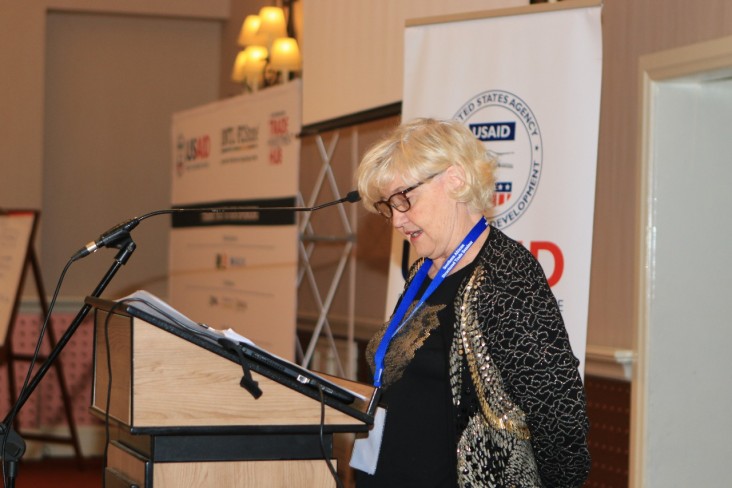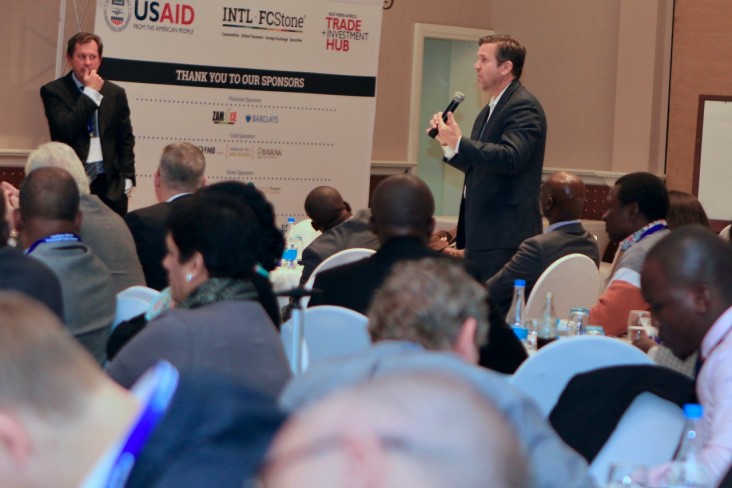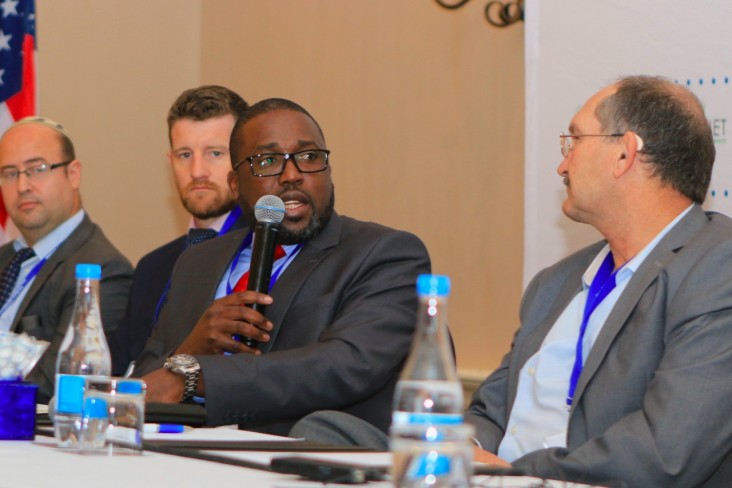Speeches Shim

Private sector partners, businesses, and associations,
Media representatives,
Civil society,
Many other distinguished guests, ladies, and gentlemen:
Good Morning.
As we bring the Structured Trade Seminar to a close, I would like to say what a pleasure it has been to be part of this important regional event.
Let me start by thanking our hosts from the Government of Zambia, specifically the Ministry of Finance, the Ministry of Agriculture, and the Ministry of Commerce, Trade and Industry as well as ZAMACE by helping putting this together, as well as any other agencies that have helped make this seminar not only stimulating, but also productive and enjoyable.
As you know, the United States Agency for International Development (USAID) engages in a wide variety of areas to support economic growth, trade and investment across Southern Africa. That is why through seminars such as this one we seek to not only to increase agriculture output but to create sustainable platforms that enable agribusiness to maximize returns via a transparent commodities trading system.
One might ask: why is structured trade important? Well, let’s look at own history in the United States. Over 170 years ago, farmers in the US traded much like farmers here. But then they began gathering in the streets of Chicago to sell their harvests. As a result, farmers were able to get a better, fairer price and buyers were more certain of the quality of the grain they were purchasing. As a result of having a centralized location for buyers and sellers, prices began to stabilize in the Midwest for the first time. But there were still challenges that farmers faced. While the market place was successful, farmers were still subject to harvest time prices and the income that they earned outside the harvest period was still minimal. Credit risk remained a serious problem. And, if it was a bad crop year, the farmers were even worse off. Something more was needed.
In 1848, the Chicago Board of Trade was founded to help address the risk and price factors that farmers and buyers alike faced. It provided a centralized location where buyers and sellers could meet to negotiate and formalize forward contracts. Something I think we all tried to do yesterday.


It was not an instant success – this simple version of structured trade was not what farmers or buyers had in mind. The city’s grain traders and merchants had no real interest in the Chicago Board. They preferred to do trading, just as they always had, in the streets of Chicago amongst the wheat and grain that were being sold. So what did the Board do? They began offering free lunches to anyone who would trade on that board. Who would say no to that or who would say no to a free lunch? But, even then, in 1851, only a handful of traders showed up at the peak of the harvest season.
Then the Crimean War broke out, bringing increased demand for American grain. Chicago’s prime position on the waterways of Lake Michigan and its connections to the Mississippi made it a prime hub to move large quantities of grain quickly and inexpensively. The Board subsequently adopted commodity standards, making it possible for buyers to purchase large quantities of grain versus a sack from a specific farmer, knowing that the quality of the bulk grain purchase would be acceptable. From there, the idea of securing a purchase or sale in the future came quickly. After the United States’ Civil War in 1864, bulk trading took off with futures dominating the so called “sack purchase”. In 1875, the Chicago Tribune reported that grain trade had reached $200 million while futures trading had passed $2 billion.
This little lesson in history helps all of us realize that by working together we can make a difference and each of us has a part to play, as you have mentioned this morning – from the private sector to government. It was farmers, traders, merchants and bankers that led to the birth and growth of this sophisticated exchange and standardized products. Imagine, in only 20 years, the Exchange went from free lunches to $2 billion in futures trading. It is now the largest exchange in the world! This same mix of people that drove the structured trade innovation in the United States can happen here in Africa. I look forward to seeing it become a reality! I only hope it doesn’t take 20 years.
Let me close by expressing our thanks and appreciation to our partners from the USAID Southern Africa Trade and Investment Hub and its U.S.-based, NASDAQ-listed private sector partner INTL FCStone, as well as our other sponsors, ZAMACE, Barclays, FMB, the Foundation for Smoke-Free World, and BARAK. Many others here contributed as well, and we want to say thank you. I would like to thank everyone in this room who has become active participants in this seminar, you have made the difference this week, your input, your suggestion, your thoughts, can make structured trade become a reality in this region, and not wait the 20 years. As we discussed over the past few days, establishing reliable structured trade mechanisms to engage and manage risk, provides access to commodity finance and stimulate investment is critical for the extension of Agribusiness and food security.
I believe we have made great progress here in Livingstone, and I look forward to seeing the impact of this seminar and your good work as it will be worked out. One of our colleagues at our table said, we need to have this seminar again next year, we need to understand what has actually happened as a resolve, and I would encourage that seminar to take place so, Trade Hub you have your orders, let’s see what we can do in the future. Thank you very much for all your participation and hard work this week, I look forward to meeting you again next year.
Thank you.


Comment
Make a general inquiry or suggest an improvement.